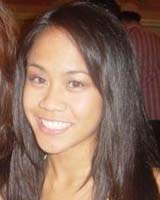Jaromay Class
(Redirected from S2K9)
Jump to navigation
Jump to search
| Jaromay Class | ||||||||||||

|
ExComm
PlexComm
Chairs
- Ritual Chair: Derek Ng
- Sneak Chair: Alexander Kwong
- BB/LB Chairs: Derek Chan, Dianne Giron, Esther Hon, Guang Chan, JD Gatto, Jeremy Cheung, Raymond Chan
- Banquet Chair: Christine Shieh
- Spirit Chairs: Ashley Pyon and Emily Ngo
Happenings
- Initiation: February 27, 2009
- Pledge Retreat: April 3-5, 2009
- Activation: May 23, 2009
Program Changes
- The Service Vice Presidents changed the negative hours system to the positive hours system as a means of positive reinforcement. This meant that rather than being penalized for a hour service project by having hours deducted from your total, one instead had hours added to their requirement. Numerically, the system was equivalent. One side-effect of this change was to make the concept of "doubling" one's hours ambiguous. However, it was held that one would be awarded the Sturdy Oak if they had doubled their base requirement. Another side-effect was that the positive hours system more accurately tracked the number of hours performed by members, thus making the total tracked hours for each term more legitimate.
- The Service Vice Presidents added a "Service Shuttle" system as an incentive to drive to service projects. This awarded 15 minutes of service to an individual for a certain number of miles driven to a service project, for a maximum of one hour.
- An unprecedented seven Big Bro/Little Bro Chairs were appointed as opposed to the typical six. This allowed the pledge parents to involve three people from each family in the pairing process, avoiding the usual imbalance. It also potentially reduced the pressure of getting to know such a large class.
- Pledge Leadership Workshop became an event at which each pledge group was required to teach brief 20-minute workshops. Seventeen workshops were presented consecutively, making for a relatively long event. Ashish Bhatt was appointed chair of the project, but pledges were given a fair amount of independence in preparing their workshops.
- The Pledge Parents held three "Meet the Pledges" events. These events were filled with icebreaker games for pledges. Attending one such event was a requirement for picking up a little bro.
- Membership Vice Presidents introduced post-rush, mid-term, and end-term interviews for actives. These interviews entailed getting to know actives and trying to figure out their goals for the term, or to help them come up with a plan to make active status. This was intended as a retention tool, and attending all three interviews earned one wildcard. One concern for this idea was that having actives approach the officers was a passive affair that would only attract those who already intend to be active. It did not help with assessing why the more distant members had begun to go inactive.
- Corresponding Secretaries made Xpressions online for the first time and did not print any paper copies in an attempt to be more environmentally friendly.
- Press Secretaries created an A-board this term to promote the fraternity during rush week.
- Meeting minutes were not saved this term due to a misunderstanding.